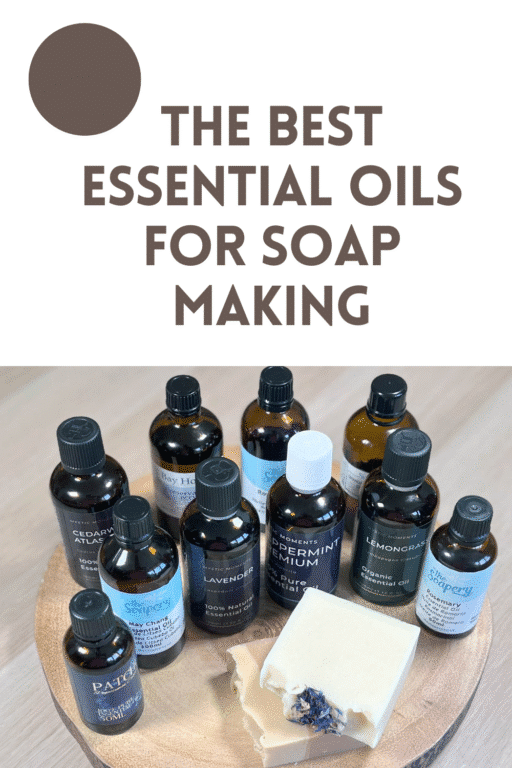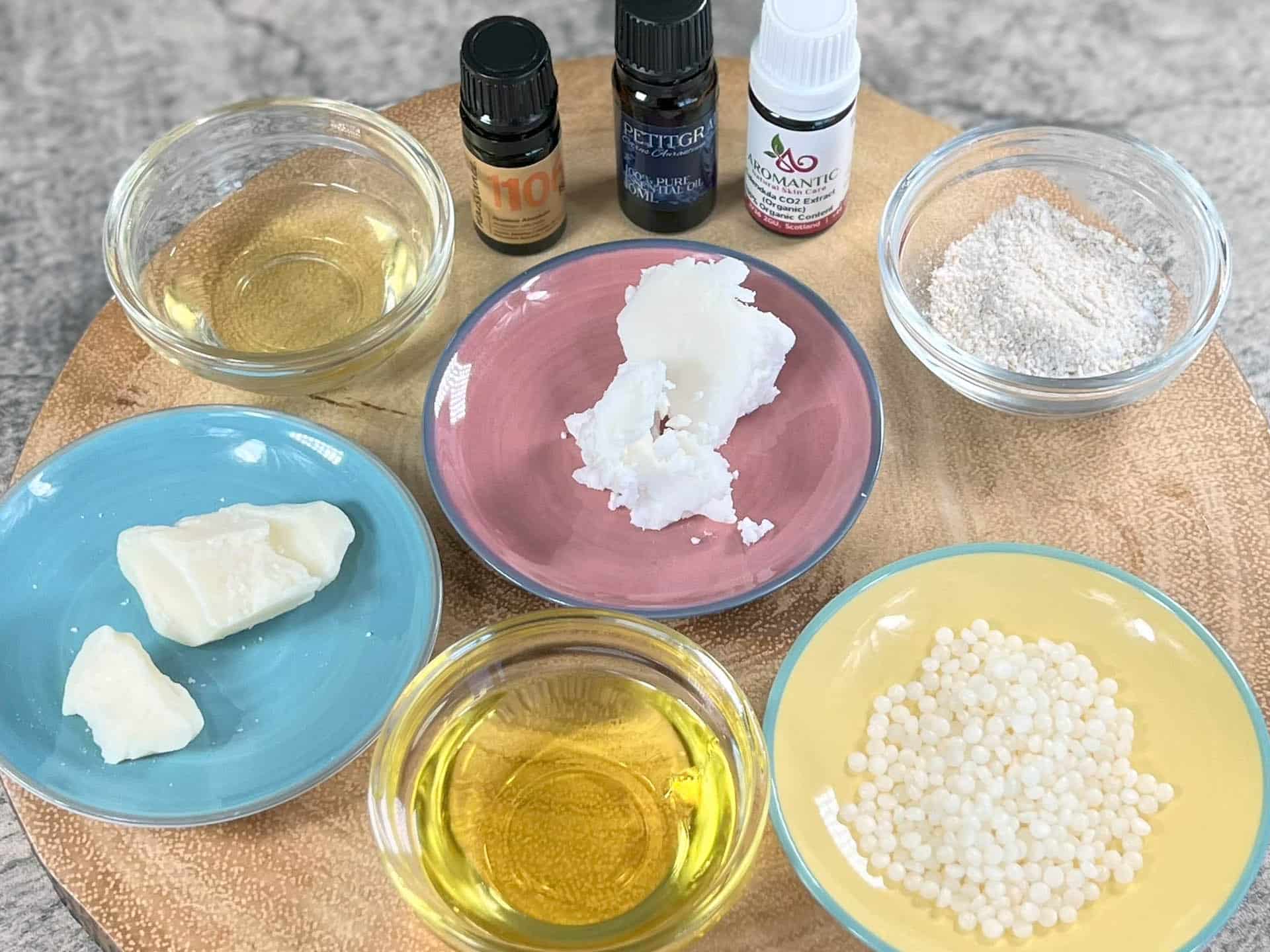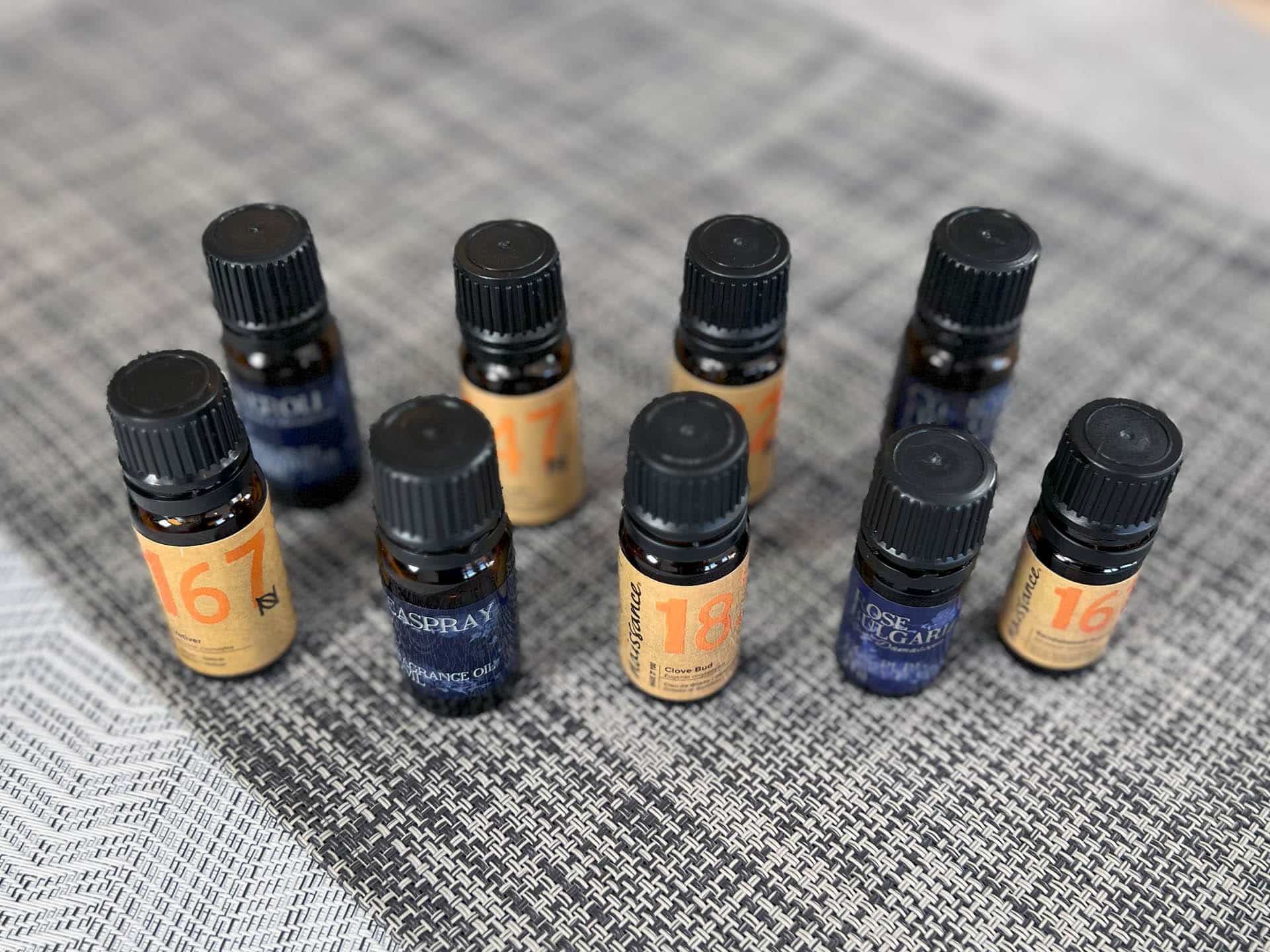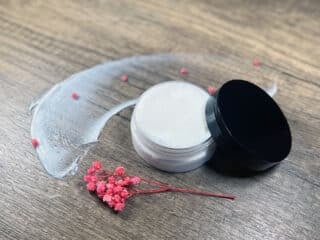If you love handmade soap as much as we do, you already know that scent can make or break your bar. The right blend changes a simple soap recipe into something you want to sniff twice before you wash.
That is why essential oils for soap making matter so much.
They do more than smell nice. Each oil brings a mood, sometimes a little skin friendliness, and a vibe that turns a routine shower into a tiny ritual. And yes, we will talk safety, both UK and EU rules and the United States too, so you can choose wisely and label correctly from day one.
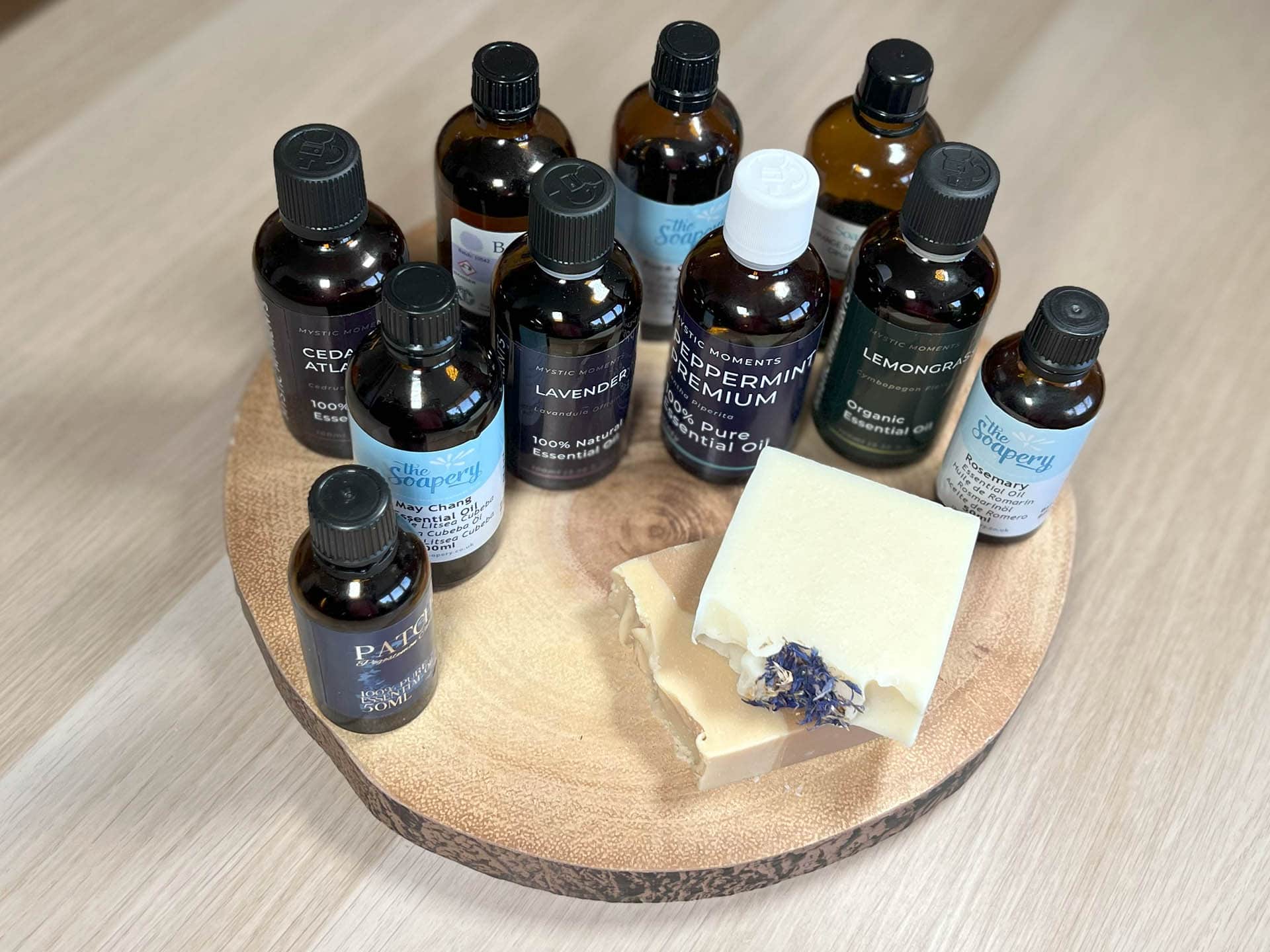
Why Are Essential Oils Often Used in Soap Making?
The short answer is for character. Essential oils are concentrated plant extracts, and soap makers use them to add scent that feels alive, not flat.
That is the classic perfume pyramid at work inside your soap recipe.
There is also the way certain oils feel when you use them. Lavender oil reads calming after a long day. Peppermint wakes things up. Ylang ylang, heady and a little sweet, turns an ordinary pour into something a touch luxurious.
Are they miracle cures? No. But using essential oils in soap making can create a sensory experience that feels tailored to you.
One more practical reason, essential oils are natural aromas that, when used correctly, play nicely with common soapmaking fats like olive oil and shea butter. They are a straightforward way to fragrance cold process, hot process, and even melt and pour soaps without a cabinet full of synthetics.
How Much Essential Oil Do You Need For Soap?
First, a reality check. Those who sell soap in the UK or EU must follow legislation with strict guidelines. Before you make anything, always check the IFRA documentation for the specific essential oil and the correct product category for rinse off soaps.
For bar soap, IFRA places it in Category 9, which guides maximum use based on safety assessments. In the United States, IFRA Standards are a voluntary, industry system, still widely followed because they promote safe use and many suppliers issue IFRA certificates with category limits. Use them as a benchmark alongside your local laws. Guidance for the use of the IFRA Standards.
For personal projects, I often land around 2 to 3 percent essential oil by weight of oils in cold process, but that is a starting point, not a rule. Example, a 1 kilogram oil batch at 2 percent would use about 20 grams of essential oil. Some oils are capped much lower by IFRA, so look them up every time. Natural does not mean unlimited. Too much can irritate skin, especially with spicy notes like clove.
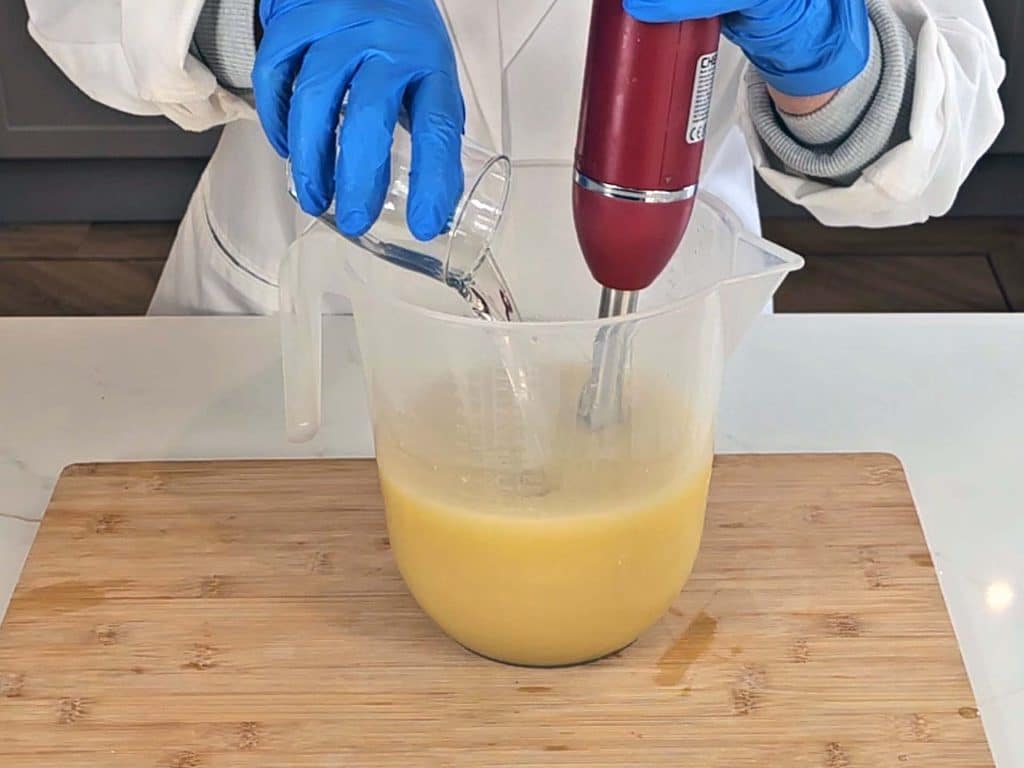
Quick Regulatory Notes For US Makers
If your bar is a true soap, meaning primarily the alkali salts of fatty acids and marketed only as soap, it is regulated by the U.S. Consumer Product Safety Commission. If you add cosmetic claims such as “moisturizing” or “deodorizing,” or if you use synthetic detergents, the product becomes a cosmetic under FDA rules.
Cosmetics must follow labeling laws, including ingredient declaration, business name and address, net quantity, and any required warnings. Under the Modernization of Cosmetics Regulation Act of 2022, most cosmetic facilities and products also require FDA registration and listing. True soap under CPSC does not require cosmetic labeling, although clear, truthful labels are still smart.
- U.S. Consumer Product Safety Commission Soap Business Guidance
- U.S. Food and Drug Administration FAQ on Soap Making
Top Essential Oils For Soap Making
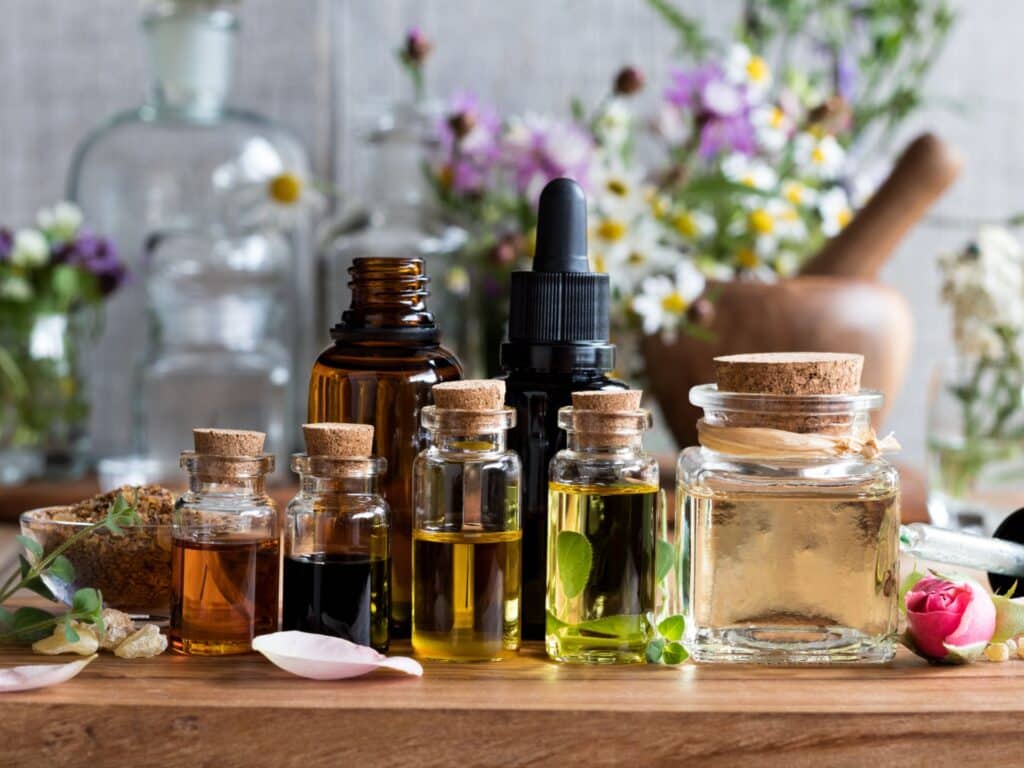
A bright top note such as lemon makes the first sniff sing. A middle note like rosemary essential oil gives it body. Base notes like patchouli or cedarwood stick around and keep the soap blend grounded.
Here are my top ten, the bottles I actually reach for when I want consistent results. It doesn’t necessarily mean they’re the oils that smell the best, but rather they’re well behaved in soap formulations, are affordable and are readily available worldwide with rigid supply chains.
I have a list of more than 40 in my downloadable essential oils chart, but this is my short list for essential oils for soap making because they smell great, behave well, and blend like a dream.
- Lavender essential oil, middle note. Reliable, gentle on the nose, and blends with almost anything. Great in beginner soap recipes because it behaves well.
- Lemon essential oil, top note. Sparkling and clean. Use expressed lemon carefully since some citrus are phototoxic at higher rates; many soap makers prefer steam distilled versions which are not phototoxic.
- May Chang, Litsea cubeba, top to middle. Bright lemon candy without being sharp. It anchors citrus blends surprisingly well and sticks better than most top notes.
- Rosemary essential oil, middle. Herbal and fresh. Pairs with peppermint for an energizing bar. Choose cineole type for a clearer, eucalyptus like lift.
- Patchouli essential oil, base. Earthy and smooth. A fixative that helps lighter notes linger. Even if you think you do not like patchouli, try a tiny percentage in blends.
- Cedarwood essential oil, base. Dry and woody, perfect for grounding florals. Texas and Virginia types are more pencil shavings, Atlas leans slightly sweet.
- Sweet orange essential oil, top. Cheerful, kid friendly, and great in melt and pour. Like lemon, consider folded varieties for better staying power.
- Peppermint essential oil, top to middle. Cool and crisp. A little goes a long way in soap bars, so watch totals on sensitive skin.
- Ylang Ylang essential oil, middle to base. Exotic, lush, and floral. Amazing in tiny amounts with woods or citrus. IFRA limits are modest, so measure carefully.
- Lemongrass essential oil, middle. Zesty with a clean kitchen feel. Gives superb throw in both hot process and cold process soaps.
A quick aside while we are here. People often ask why tea tree essential oil did not make my top ten. I love it in functional bars, especially for gym bags, but its scent is more purposeful than pretty. Still, it blends beautifully with rosemary oil and lemon for a fresh spa vibe.
FAQ
Common Questions, and the Answers, About Using Essential Oils in Soapmaking
- Do flashpoints mean my scent will evaporate out of cold process soap?
No. That is a common misconception. An essential oil’s flashpoint is a shipping and storage safety number, not the temperature at which it vanishes in your batter. Scent retention is about volatility, how fast a molecule evaporates, and how the note binds within the soap matrix. Keep temps reasonable and lean on base notes to help lighter notes hang around. - Why did my batter race to thick pudding after adding fragrance?
Some essential oils, clove and cinnamon especially, can accelerate trace. Plan for it, soap cooler, and avoid intricate swirls when testing a spicy blend. - My finished bar smells weak after cure. What happened?
Top heavy blends fade. Add a base like patchouli or cedarwood. Or use May Chang to bolster citrus. Also check your cure conditions. Airflow is good, harsh sunlight is not.
What is the 20/30/50 rule for essential oils?
It is a blending guideline. Aim for roughly 20 percent top notes, 30 percent middle notes, and 50 percent base notes in an essential oil blend intended for soap. You do not need to be exact. Think of it like a recipe that favors longevity in a wash off product.
Lemony highs for the first sniff, a solid heart so the bar smells good in the shower, and enough base so the scent sticks after cure.
Also, sometimes you want to stray from this completely. There’s nothing wrong with making an all lavender soap, for example. Perhaps it the aroma doesn’t last as long, but is beautiful as long as it last. In my house, soaps never last longer enough to lose their aroma, anyway.
If you’re interested in knowing more about the best aromatic blends for soap making, check out our brand new soap making course. We have lessons dedicated to this very issue.
What essential oils should not be used in soap?
There is not a single blacklist, but there are high caution oils. Cinnamon bark, clove bud, oregano, thyme, and wintergreen are strong sensitizers and need tiny percentages if used at all.
Many people express citrus oils, like bergamot and lime, can be phototoxic at higher levels; reach for steam distilled types which are not phototoxic.
And while we are at it, remember that some natural constituents, like beta myrcene and pulegone that occur in certain plant oils, appear on California’s Proposition 65 list. If you sell into California and your product exposes consumers above safe harbor levels, you may need a warning. When in doubt, talk with a regulatory pro.
Is it better to use fragrance oil or essential oil in soap making?

It depends on your goal. Essential oils are natural, complex, and lovely, but the palette is smaller and some notes fade faster. Fragrance oils offer huge variety and many are formulated to behave well in cold process; they can discolor or accelerate, so read notes from other soap makers before you pour.
I use both. If I want true lavender with cedarwood for a classic bar, essential oils. If I want birthday cake, that is a fragrance oil day.
What three essential oils go well together?
Here are a few trios I reach for, with blend ratios that follow the 20 30 50 idea. Adjust to taste and your IFRA limits.
- Lavender 30, Sweet Orange 20, Cedarwood 50. Calm, clean, and balanced for everyday soap bars.
- Rosemary 30, Lemon 20, May Chang 50. Fresh, bright, and it lasts surprisingly well.
- Patchouli 50, Sweet Orange 30, Clove 20. Warm and cozy. Go easy on clove for skin comfort.
- Lemongrass 30, Ginger 20, Sandalwood 50, if you have it. Kitchen clean with a creamy base.
- Peppermint 20, Rosemary 30, Tea Tree 50. Gym bag fresh. Not fancy, very functional.
Maybe it is just me, but I always make a tiny 10 gram test blend first. I sniff it on a paper strip, then on a cotton ball after ten minutes, and change course if it feels lopsided.
Where to buy essential oils for soap making?
Shop with reputable essential oil suppliers that serve soap makers. Look for GC MS reports, IFRA certificates, and allergen statements.
In the United States, if your product is a cosmetic, follow FDA labeling rules, including ingredient declaration by common or INCI name, business name and address, and net quantity on the principal display panel.
True soap that is only marketed as soap falls under CPSC and is not subject to cosmetic labeling, though children’s products have extra CPSC rules like tracking labels and lead testing. If your product makes cosmetic claims, you are in FDA territory and should also be aware of MoCRA facility and product listing.
While we are on the topic, buy small when trying something new. Essential oils age, and you might discover that lemongrass you loved in the bottle is too loud at cure.
Final thoughts
Final tip before you grab your stick blender. Essential oils for soap making are a combination of with a bit of math. Respect the safety standards, and keep notes on every soap batch you make.
And recently I posted a research-backed guide to essential oils for hair care, with real routines, safety tips, and picks for growth, dandruff, shine, and a calmer scalp. Well worth your time.

